Temple of Boom – homage to the Parthenon in the heart of Melbourne revealed
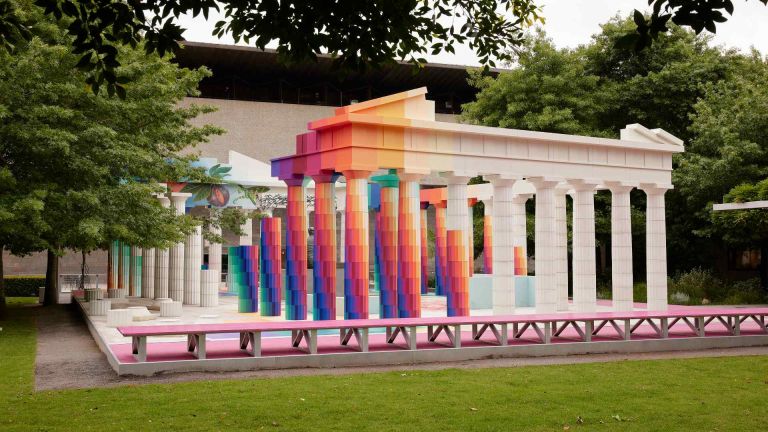
Πηγή: Concrete Playground
The much anticipated launch of the Temple of Boom, a playful reimagining of the Parthenon erected in the garden of Victoria’s National Gallery, took place on Monday 21 November in true Melbourne fashion, under the sun, rain and hail, all alternating every five minutes.
The project, designed by Melbourne-based architects Adam Newman and Kelvin Tsang, is the seventh iteration of the NGV’s Architecture Commission and is set to host cultural, political, artistic gatherings as well as music events of all kinds.
“We run a competition every year for the NGV Architecture Commission, it’s an open-ended national competition through which we are looking for thought provoking works of temporary architecture. Things that can start a conversation with the community,” Ewan McEoin, Senior Curator of Contemporary Art, Design and Architecture at the NGV told Neos Kosmos.
Without hesitation, Adam Newman said that if he could be “a fly on the wall of any one building on the planet” to witness how events affecting the history of humanity unfolded through the history of known civilisation he would undoubtedly choose the Parthenon.
A SYMBOL OF REBIRTH AND COMMUNITY
Beyond being a monument of artistic perfection, the Parthenon is loaded with symbolism, holds significant meaning when it comes to politics and geopolitics to this day, Newman feels.
When the competition was announced, during lockdown, the importance of rebuilding the community and our faith in humanity was at the forefront of Newman and Tsang’s minds.
Feeling the world collapsing around them, building something that symbolised unity, freedom and perseverance was paramount. The Parthenon was without a doubt the perfect example, having been restored, ruin upon ruin, to still stand proud and be admired and respected as a symbol of civilisation, bringing people together to create and evolve.
“We were looking for a place for engagement, reflection, somewhere to play, to rest. It was very, very flexible,” McEoin told Neos Kosmos. “Adam and Kelvin entered with this scheme that they developed online during lockdown as a site for gathering as a community, street art oriented so it will be accessible and relatable to everyone, and a site for live music … enter boombox, hence the name, Temple of Boom.”
The architect duo got shortlisted from almost 80 entries, reworked a final pitch and won. Since the announcement, they have been expanding on the idea and have been joined by Toby Banador from Just Another Agency. Benador, who curates the artwork, creates urban art projects and was invited to the team as Adam and Kelvin’s proposition was to make it a site for street, urban art, and “bring in colour”.
IN LIVING COLOUR
While some may think that a colourful Parthenon is “a weird sight” Benador explains that the original monument was colourful, and constantly updated.
Phidias – the then known world’s most celebrated sculptor created the Parthenon to be vibrant, a feast of colour, depicting the gods in all their imagined glory, but also humans as descendants of those gods, resembling them in reverence and vitality. Phidias depicted moments of daily life, the arts, war, philosophy in colour. According to ancient historian Pausanias he sculpted a huge statue of Athena Parthenos inside the Parthenon covered in gold and ivory. The statues had their clothing, hair and skin painted, their eyes coloured with enamel, their accessories often being real jewellery. Scenes would be added as events that changed the course of history unfolded.
Διαβάστε όλες τις τελευταίες Ειδήσεις από την Ελλάδα και τον Κόσμο



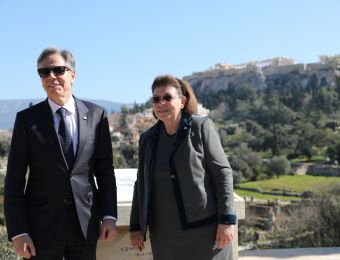


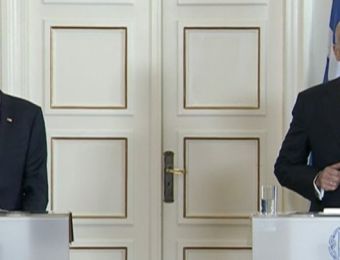








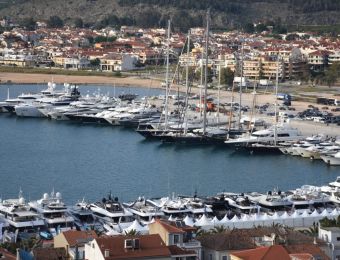


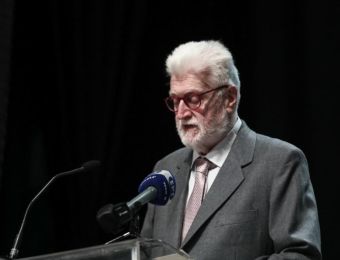






Το σχόλιο σας